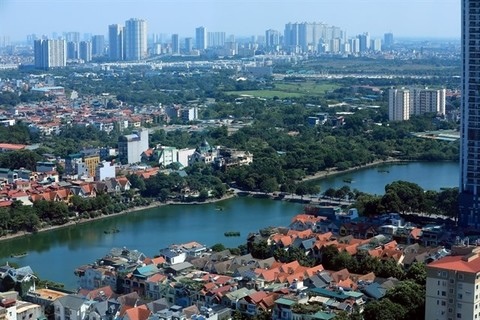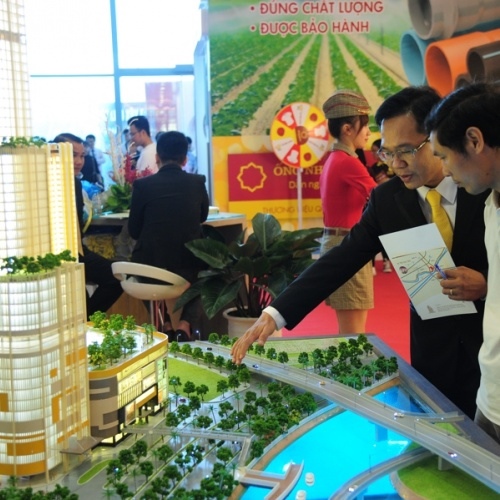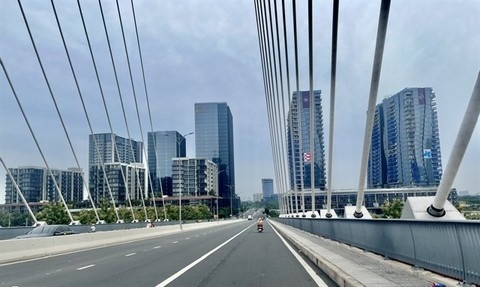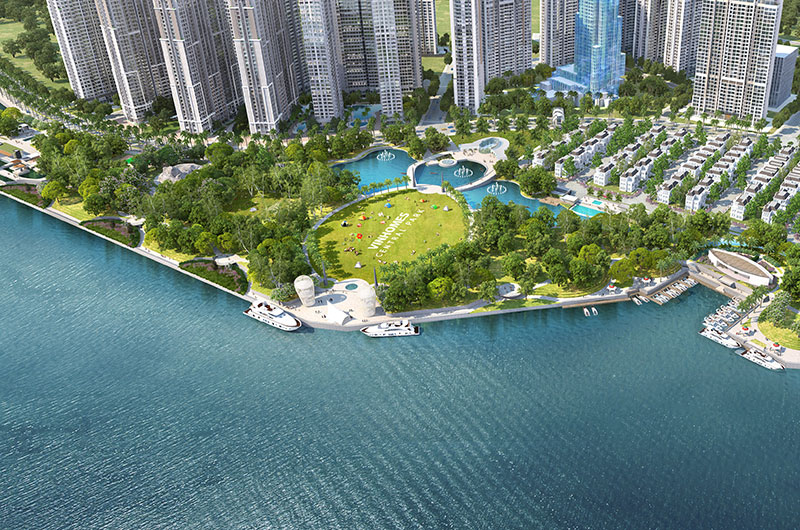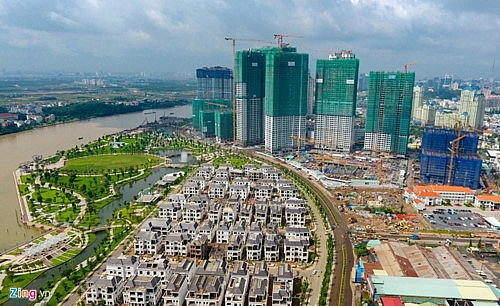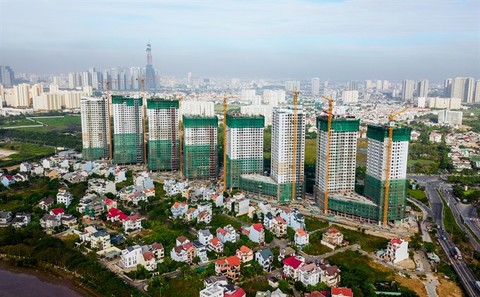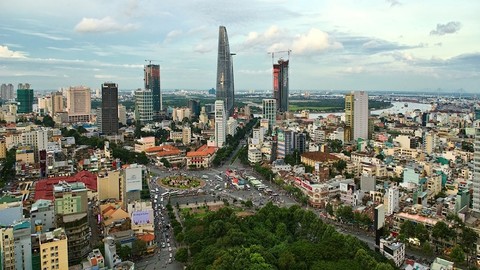Signs of another property bubble?
Signs of another property bubble?
The Vietnamese real estate market has been on a strong path to recovery since 2014. We have witnessed a strong breakthrough as many projects were offered for sale with good absorption in the market. Higher supply coupled with demand also fluctuated at a high level. Does the real estate market in 2018 show any hidden signs of a bubble? Vo Huynh Tuan Kiet, head of Residential Project Marketing at CBRE Vietnam, shared some of his impressions on this issue.
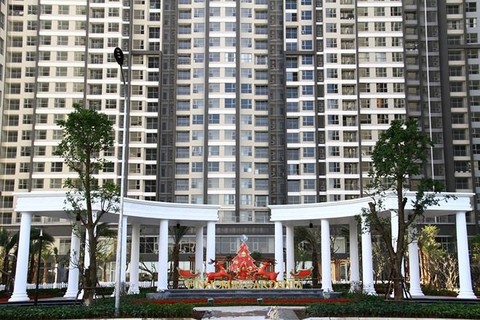
Probability of a bubble
Since its quick recovery in 2014, the Vietnamese real estate market has witnessed an unparalleled supply of new projects being constantly launched and with good net absorption. Along with the market’s traditional segments, new products have been introduced, such as second-home villas, condotels, and officetels. Since 2015, the Vietnamese government loosened its requirements for foreigners to buy and own properties in Vietnam, which helped attract more foreign investors to the market.
Nonetheless, many experts and investors have cast doubts upon this rapid recovery, predicting underlying risks. These risks include an oversupply of high-end projects, the return of speculators, and falling market demand. The biggest concern would be another property bubble akin to the one that shook the market in 2007 and froze the property market until 2013. The market is still paying the cost of this previous bubble.
As the market in 2018 will expect more changes and uncertainties, one should be on the lookout for any worrying signs of a property bubble.
First and foremost, one should examine the global real estate market to have a thorough understanding of property bubbles.
Notable property bubbles in the world
Historically, property bubbles were associated with economic crises. The most well-known property bubbles are those occurring in Japan (1992), the US (2006), and China (2011-2012).
Japan (1992)
In the post-World War II period, the Japanese economy flourished in what is famously referred to as the Japanese economic miracle, especially during the 80s. As a result, a tremendous amount of money was poured into the Japanese property market, pushing housing prices to rise by 50 per cent and commercial prices by 80 per cent each year. In 1991, the property bubble was valued at $18 trillion.
In 1992, the property bubble burst. As housing prices went down by more than 60 per cent during 1991-2005, the country suffered from negative economic growth and the number of companies that filed for bankruptcy increased by 600 per cent.
The US (2006)
A robust economic growth during the 80s and 90s led to soaring housing prices in the US, starting from 1996. In the 1996-2005 period, the price increased by more than 45 per cent. The property bubble in the country was estimated at $5 trillion in 2005.
In 2006, the property bubble started showing signs of bursting. The housing market turned worse because of collateral crises, which ultimately led to a financial crisis.
Since March 2007, financial institutions which offered secured loans, such as Bear Stearns, Lehman Brothers, Goldman Sachs, Merrill Lynch, and Morgan Stanley, announced a total bad debt of $150 billion. A series of banks filed for bankruptcy and some went through mergers and acquisitions (M&A). New Century Financial Corporation declared bankruptcy in August 2007. Bear Stearns was bought out by JP Morgan Chase in March 2008. Lehman Brothers went out of business in August 2008. Merrill Lynch (formerly the third largest investment bank in the US) was sold to Bank of America (BoA).
China (2011-2012)
During China’s economic boom during 2004-2007, the country’s real estate market became massive with some $147 billion invested in the market. The number grew to $210 billion in 2009. Housing prices in China grew more than ten-fold within only eight years.
In 2011, the property bubble exploded after housing prices fell for nine consecutive months.
The 2007 property bubble in Vietnam
During the development of the real estate market in Vietnam, the market witnessed significant changes as the housing fever gripped the nation in 1993, 2001-2002, and 2010. Still, the fever in 2007 was unforgettable as it formed the property bubble that lasted until 2012-2013.
The following factors contributed to the formation and burst of the property bubble:
The overheating of the Vietnamese economy: in 2007, Vietnam’s GDP growth rate reached 8.5 per cent, with Ho Chi Minh City reporting a rate of 12.6 per cent, a 10-year record. This benefited enterprises and locals’ income tremendously. The stock market boom in 2007 achieved a historical record of 1170.67 points (as of March 12, 2007), contributing to the huge amount of capital circulating in the economy. Consequently, a huge amount of capital was poured into real estate as this is still a favoured investment channel among locals.
Relaxed credit policies: Subprime loans were a direct cause of the bubble. This is evidenced by the fact that credit growth in 2007 amounted to more than 37 per cent, a large proportion of which was distributed into real estate. Social capital was also added to the market. In addition, the lack of control over credit used for inappropriate purposes created a domino effect when the market fell.
Speculative activities and secondary market boom: Periods of overheating price increases were often accompanied with the influx of speculators people who buy-to-flip on the secondary market and a plethora of real estate agents.
Lack of government control: The government’s failure to provide timely fiscal policies led to the quick formation and development of the property bubble.
Assessing the possibility of another property bubble
Vietnam is currently one of the fastest growing economies in the region. However, the economy is still recovering. The GDP growth has remained high but stable with no signs of overheating. Particularly, the GDP growth reached 6.68 per cent in 2015 but reduced to 6.21 per cent in 2016, and bounced back to 6.81 per cent in 2017. At this point, in a report published by HSBC, the forecasted GDP growth of Vietnam is 6.4 per cent in 2018. With this reasonable pace of growth, the country’s economy is not on the edge of overheating.
After the property bubble in 2007, the Vietnamese government has issued lots of policies to monitor the real estate market in Vietnam.
The domestic real estate market made a robust recovery in 2015. In 2016, the State Bank of Vietnam (SBV) issued Circular No.06/2016/TT-NHNN to adjust the loan ratio and increase the credit risk ratio for real estate activities. In summary, we can see that the government has attempted to closely monitor and control capital flows to real estate investments. It is expected that in 2018, regulating the real estate market will still be a priority on the government’s agenda.
More balanced supply
Observing the market in the period of 2015-2017, a notable number of high-end projects introduced by well-known developers have achieved good absorption rates. This trend has caused concerns over a possible supply imbalance, which seems to lean towards the high-end segment.
In 2017, the market adjusted to target the mid-end segment more. The mid-end segment accounted for 58 per cent of new launches in Ho Chi Minh City and 62 per cent of new launches in Hanoi. It also accounted for 56 and 53 per cent of sold units in Ho Chi Minh City and Hanoi. Growth in supply in the mid-end segment reached 35 per cent, higher than the market average (Figures 3 and 4).
This adjustment helps to lessen concerns over the disparity towards high-end products.
Fewer speculators: secondary market below expectations
One of the main factors contributing to a property bubble is the high participation of speculators. According to CBRE’s records, during 2007-2008, 50 per cent of total transactions were made by short-term speculators. This drove housing prices out of control on the secondary market as houses were constantly “flipped.” In 2017, speculator transactions only account for 10-15 per cent of the market total and are mostly focused on certain areas. The limited presence of speculation in recent years has helped to decrease the risk of imprudent price growth.
Meanwhile, according to CBRE’s observations, the secondary market in the condominium sector has not been very active in the 2015-2017 period. In 2017, only a small number of good locations and good projects recorded high price premiums of 15-25 per cent compared to the primary price (Figures 5 and 6).
The not-so-active secondary market reduces the risk of a property bubble.
To conclude, based on the above analysis and assessment, we can expect that at the moment the Vietnamese real estate market is on a more sustainable growth path compared to the previous cycle. Another property bubble feared by so many is not likely to occur in the short-run.
Nevertheless, continuous monitoring is still necessary for suitable policy adjustments. Some products, such as land plots and shophouses, witnessed overheating growth in some areas. Such signals should be paid attention to because if not addressed properly, they can have a significant impact on the market.


